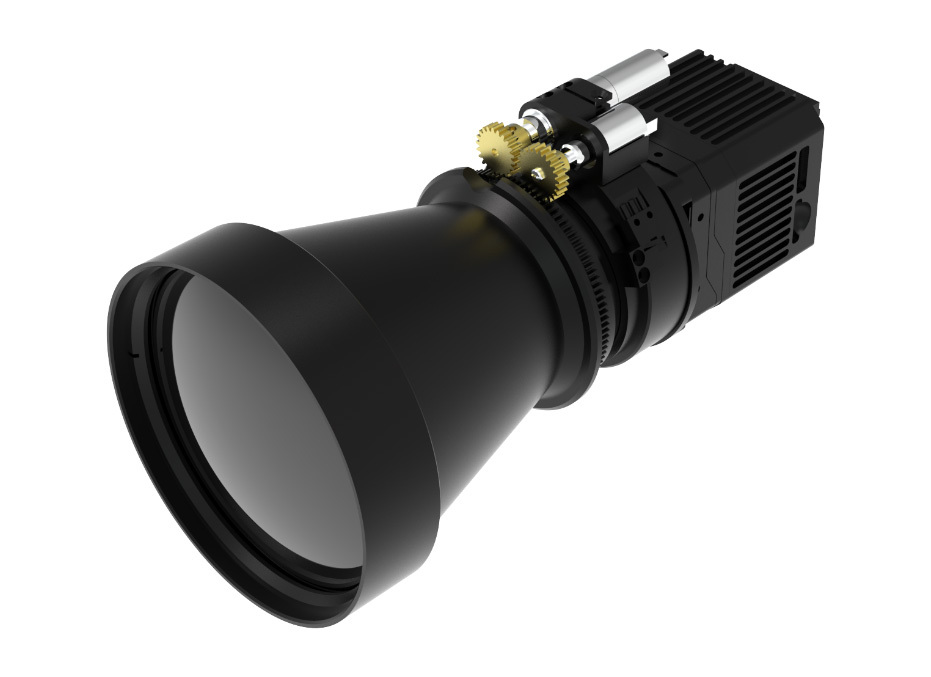Return
Why Every Engineer Should Consider a Thermal Imaging Module
Nov 17,2025

Why Every Engineer Should Consider a Thermal Imaging Module
Understanding Thermal Imaging Technology
Thermal imaging technology utilizes infrared sensors to detect and measure the thermal energy emitted by objects. Unlike traditional cameras that record visible light, thermal imaging cameras capture temperature variations, allowing engineers to visualize heat patterns and identify potential issues in a myriad of applications. **Thermal imaging modules** are an intriguing blend of sophisticated optics and advanced sensors, providing invaluable insights across multiple engineering disciplines.
The Importance of Thermal Imaging in Engineering
In today's fast-paced engineering sectors, the ability to foresee problems before they arise is crucial. **Thermal imaging modules** serve as proactive tools that allow engineers to monitor equipment health, improve energy efficiency, and enhance safety measures. By leveraging these innovative tools, engineers can **reduce downtime**, **maximize efficiency**, and **ensure compliance** with safety standards.
Applications of Thermal Imaging in Various Engineering Fields
Thermal imaging is not limited to one specific field; it finds applications in various engineering disciplines. Here are some significant sectors where thermal imaging modules make a remarkable impact:
1. Electrical Engineering
In electrical engineering, thermal imaging modules help detect overheating components, faulty connections, and other issues that could lead to electrical failures. Engineers can conduct routine inspections to identify hot spots and prevent system failures, thereby extending the lifespan of electrical equipment.
2. Mechanical Engineering
Mechanical engineers utilize thermal imaging to inspect machinery for wear and tear. By monitoring temperature variations in moving parts, they can identify lubrication problems or misalignments that could lead to catastrophic failures. This predictive maintenance approach saves time and resources by addressing problems before they escalate.
3. Civil Engineering
In civil engineering, thermal imaging is valuable for building inspections, energy audits, and identifying heat loss in structures. Engineers can evaluate insulation effectiveness and pinpoint areas that require improvement, ultimately enhancing energy efficiency in buildings.
4. Aerospace Engineering
Aerospace engineers benefit from thermal imaging in assessing aircraft performance and safety. By monitoring engine temperatures, they can ensure that systems operate within safe limits. Thermal imaging also plays a crucial role in quality control during manufacturing processes.
Benefits of Integrating Thermal Imaging Modules
The integration of thermal imaging technology into engineering practices offers an array of benefits that can significantly improve project outcomes.
1. Enhanced Diagnostics
Thermal imaging provides real-time insights into temperature distribution, allowing engineers to diagnose issues with precision. This enhanced diagnosis reduces guesswork, leading to faster and more accurate problem-solving.
2. Increased Safety
By identifying potential hazards such as overheating equipment or electrical faults, thermal imaging helps enhance workplace safety. Engineers can mitigate risks and take preventive actions to avoid accidents.
3. Cost Savings
Investing in thermal imaging modules can lead to substantial cost savings. By enabling predictive maintenance, organizations can reduce repair costs and minimize downtime, which directly impacts the bottom line.
4. Improved Energy Efficiency
Thermal imaging is a powerful tool for conducting energy audits. Engineers can identify areas of energy loss and recommend improvements, leading to more energy-efficient systems and reduced operational costs.
Choosing the Right Thermal Imaging Module
Selecting the appropriate thermal imaging module involves understanding the specific needs of your engineering applications. Various factors should be considered:
1. Resolution
Higher resolution cameras provide clearer images and more detailed thermal data, which is crucial for accurate analysis. Engineers should assess the level of detail required for their specific applications.
2. Sensitivity
The sensitivity of a thermal imaging module indicates its ability to detect small temperature differences. A highly sensitive camera is essential for applications where even minute temperature variations can signify a problem.
3. Software Compatibility
Thermal imaging modules often come with software for image analysis and reporting. Ensure that the module you choose is compatible with the software tools you use for seamless integration into your workflow.
4. Portability
Depending on the application, engineers may prefer a lightweight, portable thermal imaging module for fieldwork. Portability allows for flexible inspections and assessments in various environments.
Implementing Thermal Imaging in Your Engineering Workflow
To effectively integrate thermal imaging modules into your engineering workflow, consider the following steps:
1. Training and Education
Ensure that your engineering team receives proper training on how to use thermal imaging equipment effectively. Familiarity with the technology will enhance the accuracy and reliability of the data collected.
2. Establishing Protocols
Develop clear protocols for when and how thermal imaging inspections will be conducted. Consistency in inspections can lead to improved reliability in the data collected.
3. Data Analysis
Harnessing the power of thermal imaging involves analyzing the data collected effectively. Engineers should utilize software tools to interpret thermal images and generate reports that highlight key findings.
Common Myths About Thermal Imaging Technology
Despite its advantages, thermal imaging technology is often misunderstood. Here are some common myths that need debunking:
Myth 1: Thermal Imaging is Only for Specialized Fields
In reality, thermal imaging serves a wide range of engineering disciplines. From electrical to civil engineering, its versatility makes it applicable in many sectors.
Myth 2: Thermal Imaging is Expensive
While initial costs may seem high, the long-term benefits of thermal imaging significantly outweigh the investment. The potential for cost savings through predictive maintenance makes it a worthy investment.
Myth 3: Thermal Imaging is Difficult to Learn
With the right training and practice, engineers can quickly become proficient in utilizing thermal imaging technology. Many manufacturers offer educational resources and support to ease the learning curve.
Frequently Asked Questions (FAQs)
1. What is a thermal imaging module?
A thermal imaging module is a device that detects and visualizes thermal energy emitted by objects, allowing users to assess temperature variations in real-time.
2. How does thermal imaging benefit predictive maintenance?
Thermal imaging identifies overheating components and anomalies, enabling engineers to address issues before they lead to costly equipment failures.
3. Can thermal imaging be used in outdoor applications?
Yes, thermal imaging modules are designed for various environments, including outdoor settings, making them versatile for field inspections.
4. How can thermal imaging enhance energy efficiency in buildings?
By conducting thermal audits, engineers can identify heat loss areas, leading to improvements in insulation and overall energy efficiency.
5. Are thermal imaging cameras easy to use?
With proper training, thermal imaging cameras are user-friendly and can be operated effectively by engineers across various disciplines.
Conclusion
Integrating thermal imaging modules into engineering practices is not just a trend; it is a necessity for modern engineering disciplines. The ability to monitor and analyze thermal data enhances diagnostics, improves safety, and leads to substantial cost savings. By dispelling common myths and embracing the technology, engineers can harness its full potential to elevate their projects and ensure efficient operations. As industries continue to advance, the role of thermal imaging will only grow, making it an indispensable tool for every engineer committed to excellence and innovation.
Contact Us
EMAIL: Guojin@settall.com
No. 8, 14th Building, Zone 7, Headquarters Base, West Outer Ring Road, Fengtai District, Beijing



